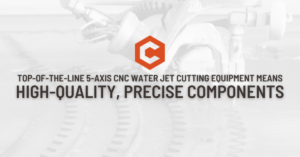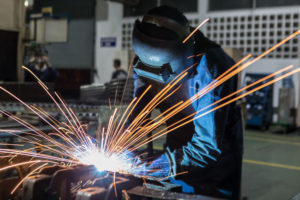
If it’s a welding project that tolerances increase on its generally not a tough to work through. For instance, explaining and showing that a tolerance of +-1/2” on the length of a tent stake is acceptable is an easy one. When you go the other way and tighten the tolerances up on a welding project it’s often nearly impossible to do. Looking at the picture above that was the case. We were looking to hold a parallel tolerance of .020″ That’s tough to do. Not impossible, but tough. We decided to weld first and then machine our surfaces to make sure we were spot on and could be confident we were delivering a quality project within the .020” tolerance specified.

Here is a picture of another weldment that needs machined that is moving through our shop. This is a pedestal for a robotic arm and it has tolerances that vary greatly. The overall height can vary by 1/8” while the top surface must be within .003″ flatness, and there are 3 or 4 holes in the top with location tolerances of .001″, and diameter tolerances of .0005″. That’s not an extra 0 in there, we are looking to keep the holes within 5 tenths. In situations where you are holding tolerances that tight your machining process needs to be perfect. Depending on how it’s been welded, whether there has been stress relief done or not, and many other factors the entire weldment might “move” and affect your tolerances. Often it takes multiple rough cuts to relieve the stress before the final machining can be done and ensure it comes out right.

In some instances we will have a customer come in that truthfully doesn’t understand these terms and tolerances. They just know what they need, where it goes, and how it functions. Here is another area where Craftco can help out. Our experienced crew can give advice on implementing realistic tolerances that help keep costs in line and maintain functionality of the end product. If you are in need of manufacturing assistance with any weldments, precision ones or not, let us know. We’re always up for the challenge!






